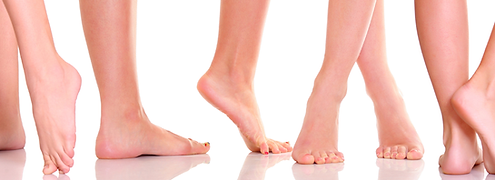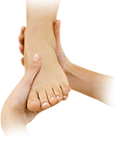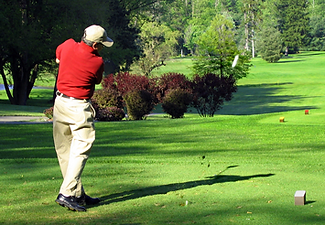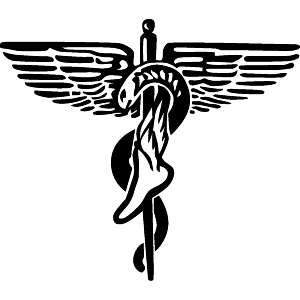Adult and Pediatric Podiatry
Skin and Nail Disorders
Athlete’s Foot and Fungal Nails are a commonly
diagnosed condition. Although often persistent,
fungal infections can be treated with a high rate of
success. Other common skin and nail conditions
include plantar warts, corns, and blisters.
Musculoskeletal Disorders
Musculoskeletal disorders may be a result of an accident, overuse, or may be structural in nature. Common problems include tendonitis, sprained ankles, fractures, flatfoot, and even arthritis.
Neurovascular Disorders
Neurovascular disorders involve either nerves or blood vessels in the foot. One commonly diagnosed condition is Morton’s Neuroma (often just referred to as a neuroma) in which a nerve passing between two toes gets “squeezed” and causes numbness or a sensation of tingling or pain in the toes. Ulcers on the feet caused by poor circulation may be of particular concern in diabetic patients. ·
Congenital and Acquired Deformities
The most well-known of these deformities are bunions and hammertoes. Other conditions include tailor’s bunions or bunionettes, flat foot, club foot, intoeing or pigeon-toes, and webbed feet. Even the most benign-looking conditions should be evaluated to detect any underlying problems. Early intervention and treatment is often key to successful recovery. ·
Trauma and Injuries
Injuries come in many shapes and sizes, and may be classified in one or more of the above categories. Physical Therapy, isolation, or surgical intervention may be needed to prevent injuries from becoming recurring or chronic conditions.
Reconstructive Surgery
Acquired Deformities
Acquired Deformities usually form over time and affect the structure of the foot or ankle. Conditions such as bunions and hammertoes are good examples of these types of deformities. Although surgery is often a recommended course of action for these conditions, non-surgical methods can help keep the condition under control if treated early.
Congenital Deformities
Congenital Deformities are a result of abnormalities present at birth, although the condition may not become visible until adolescence. Webbed toes and clubfoot are just two examples of congenital deformities. Surgery is often the only way to completely correct these conditions. However, the need for surgery is often tempered by the severity of the deformity. ·
Fracture Repair
The foot and ankle are extremely complex. Over a quarter of all of the bones in the human body can be found in the feet and ankles. A series of muscles and tendons works together to keep everything in balance. Broken and fractured bones in the foot are often subjected to the push and pull of these muscles and tendons, making it difficult for the bone to heal itself properly. Although the bones can often be isolated and stabilized without surgery, there are times when optimum healing requires internal stabilization with pins or screws. ·
Arthritic Joint Replacement
Arthritis can be extremely painful and debilitating. Arthritis in the joints of the feet can actually lead to deformity and the loss of the ability to walk. Joint replacement surgery can help restore movement, ease pain, and make you feel better. ·
Skin Plasty and Scar Revision
Scars are unpredictable. Sometimes scar tissue grows very thick, or even beyond the boundaries of the original injury or incision. In these cases it is sometimes necessary to remove excess scar tissue or even “revise” the scar. Although this procedure may be done for cosmetic reasons, it is most often done if the excess tissue causes pain or interferes with normal functions of the foot or ankle. ·
Endoscopy and Arthroscopy
Endoscopy is a means of “looking inside” the body using cameras that help diagnose problems. Endoscopy may also be used for minimally invasive procedures and for taking biopsies of tissues. Arthroscopy refers to a specific type of endoscopy in which the workings of a joint such as the ankle are examined. Arthroscopic surgery reduces the risk of infection and minimizes recovery time.
Diabetic Limb Preservation
Neurovascular Evaluation
Diabetes, over time, can restrict blood circulation and damage nerves throughout the body. This damage is often seen in the extremities, such as the feet and legs, and can cause tingling, numbness, or even complete loss of feeling. Pain is often the first sign of a problem, but in people with diabetic neuropathy this early warning may not exist. Something as simple as a splinter can go undetected and develop into an open wound. Simple tests exist to determine the extent of thenerve damage and sensitivity to various stimuli.
Ulcer and Wound Management
The majority of diabetic foot complications that result in the need for amputation begin with skin ulcers. Early detection and appropriate treatment of these ulcers is key to limb preservation. Ulcer management treatments have improved rapidly over the past years and continue to evolve. South Baldwin Podiatry is committed to staying on top of the latest advances in foot care and is constantly evaluating new treatments and techniques to help ensure you receive the best care possible.
Treatment of Charcot Arthropathy
Charcot Arthropathy, often referred to as Charcot’s Foot, is a very complex complication of diabetes. Charcot’s Foot is a swelling and deformity of the foot that often seems to develop for no apparent reason. The likely cause is actually usually associated with severe neuropathy that leads to a weakening of the bones in the foot. These weakened bones may fracture without any noticeable trauma and because of the severe nerve damage there is often no detectable pain. The patient usually continues to walk on the foot without realizing there is a problem, causing more damage. Charcot’s Foot is often under-diagnosed by general physicians because of its similar appearance to a bone infection on x-ray films and other imaging technologies. If there has not been a break in the skin and no other apparent cause of infection exists Charcot’s Foot should be considered. Bone scans, MRI, and bone tissue biopsies may be helpful in confirming a diagnosis.
Treatment of Acute and Chronic Osteomyelitis
Osteomyelitis is a potentially destructive bone infection. Diabetic patients are at an increased risk due to poor circulation issues and an increased risk of open foot sores. Although a bone infection may be the result of an infection elsewhere in the body, in diabetic patients a likely source is a deep foot ulcer, especially if it reaches the bone. Treatments range from administering antibiotics to surgical procedures to remove affected tissues depending on the severity of the infection. Thorough and ongoing treatment are key to the successful healing of this condition. ·
Diagnostics
Endoscopy and Arthroscopy
Endoscopy is a means of “looking inside” the body using cameras that help diagnose problems. Endoscopy may also be used for minimally invasive procedures and for taking biopsies of tissues. Arthroscopy refers to a specific type of endoscopy in which the workings of a joint such as the ankle are examined. Arthroscopic surgery reduces the risk of infection and minimizes recovery time.
Sports Medicine





Sport Specific Orthotics
Different sports put different demands on your body. The repetitive impact of distance running, the twisting and jumping of basketball, and the shifting of skiing require your feet and ankles to adjust differently to your weight. Custom made sport orthotics tailored to your specific activity can help keep you injury free. Many professional athletes rely on custom orthotics to keep them at the top of their game. South Baldwin Podiatry offers an array of styles that can be custom fit to you and your needs.
Biomechanical Evaluations
A physical examination of the feet and the way they function is critical to a proper diagnosis. Subtle differences in the symmetry of the feet can be big clues as to what is happening under the surface. A simple walk down the hallway may be all that is needed to perform a gait analysis that can reveal a whole source of potential problems. These evaluations may be especially telling when a problem seems to only exist during a certain activity.
Digital X-rays
Digital X-rays offer many benefits over traditional film x-rays. The most significant advantage is the detail of the resolution that allows for sharper, clearer images. Digital x-rays can detect stress fractures nearly two weeks before they would appear clearly on a traditional x-ray film. Digital x-rays typically expose patients to less radiation as well. The contrast of a digital x-ray may also be quickly and easily adjusted for optimal viewing without having to reprint film, saving the patient time and money.





